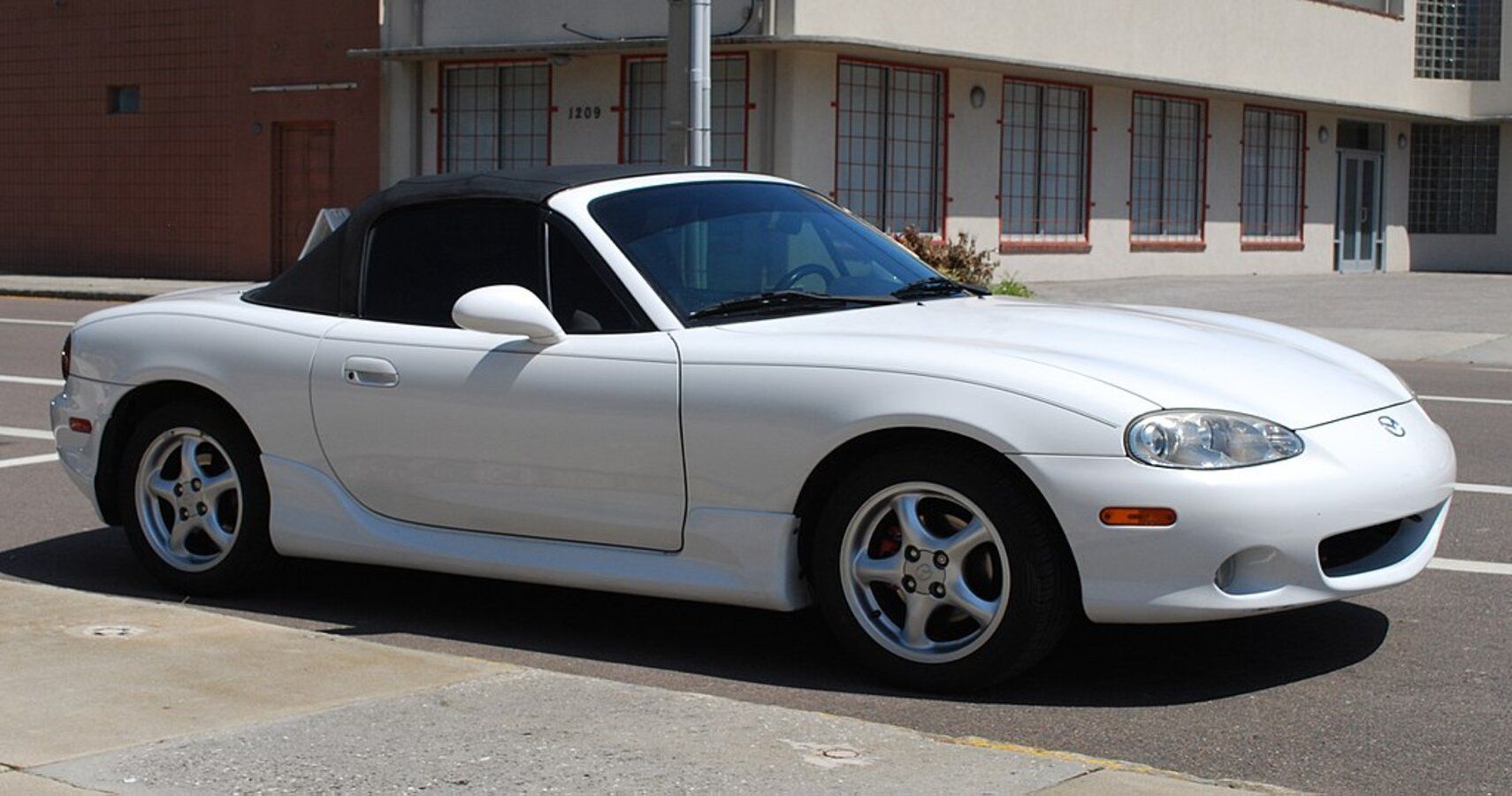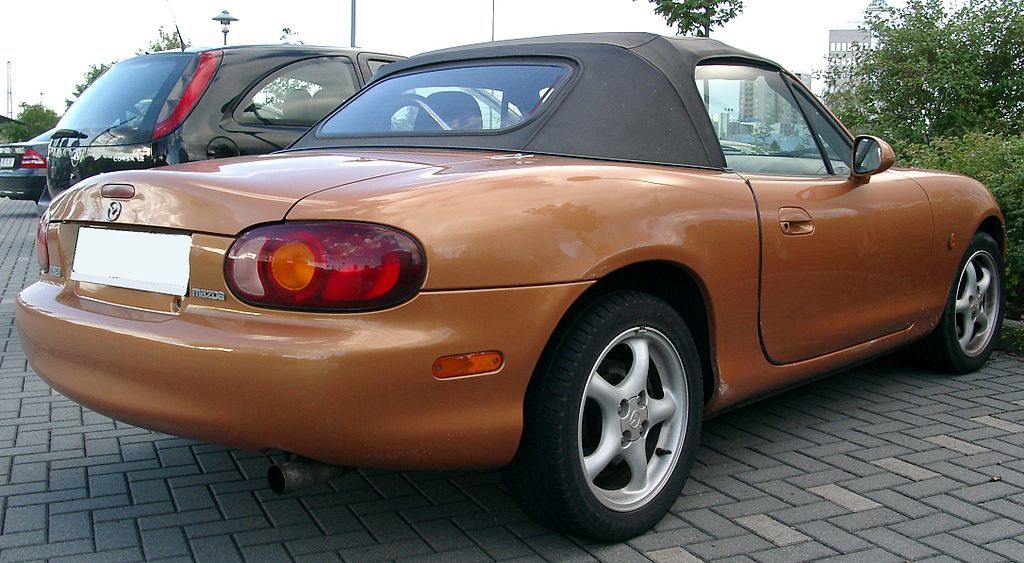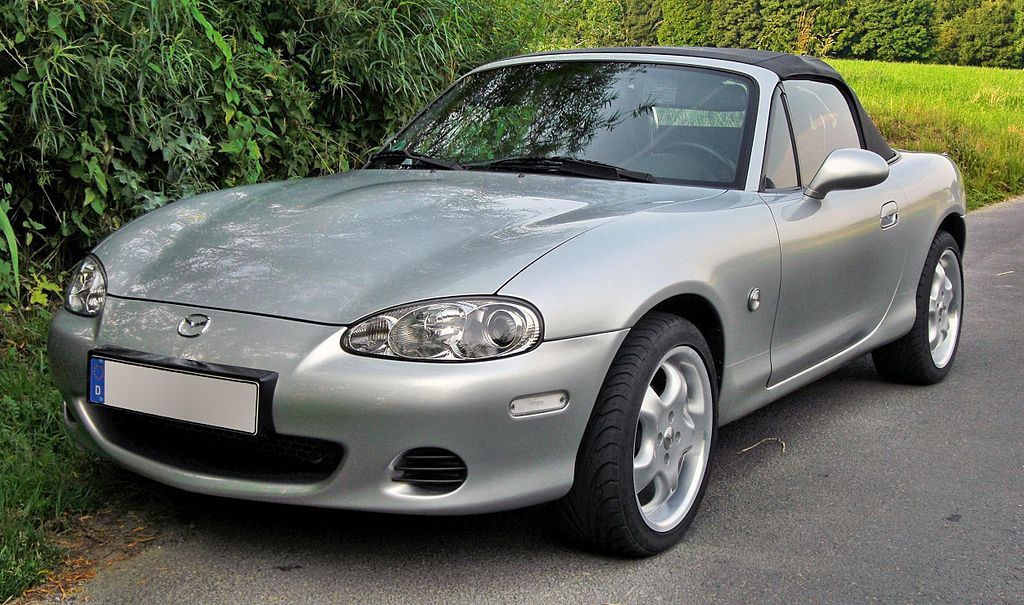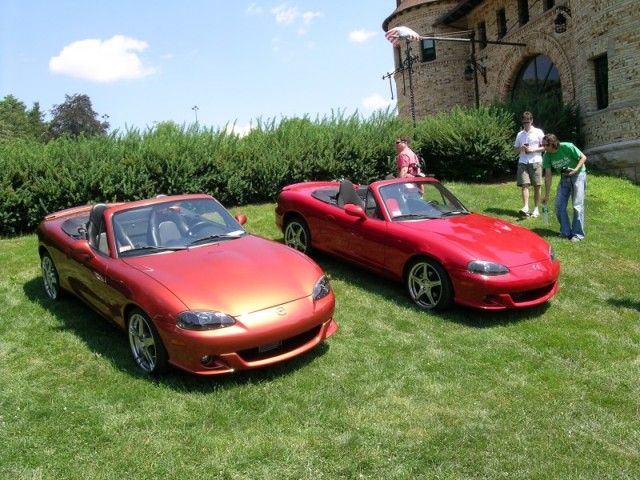1989 saw Mazda Motor Maker launch its first-ever MX-5 sports car. Making its debut at the 1989 Chicago Auto Show, the MX-5 went on to become a resounding success, overseeing four different generations over the course of 3 decades.
The MX-5 is popular all around the globe and holds the distinction of being the best-selling two-seat convertible sports car of all time. Marketed as the Mazda Roadster in Japan and as the Mazda Miata MX-5 in North America, the roadster's first-generation (branded as the Mazda Miata MX-5 NA) remained in production until 1997, winning several accolades during its eight-year reign.
Then came the Mazda Miata MX-5 NB, the second generation of this hyper sports car. Unveiled in 1997, it was put on sale a year later, eventually hitting the roads in 1999. The NB retained the same proportions as the NA, apart from a few upgrades. Like its predecessor, the Mazda Miata NB was praised for its robust, mini, light, advanced, balanced, and minimally complex design - inspired by the '50s and '60s Italian and British sports cars.
Let's have a closer look at the Mazda Miata NB and analyze how it compares to other generations.
A Detailed Look At The Mazda Miata NB
The second generation of the MX-5 faced tremendous pressure to live up to the standards of the iconic NA series of the car. Termed as the NB, it resiliently held its own to become a reasonable success despite the pressure and criticism. The NB was an upgraded replica of its predecessor - a lightweight, mid-engine roadster with rear-wheel drive. One noticeable change was the deletion of retractable headlamps which were no longer up to the pedestrian safety standards. Notably, the NB boasted an even more powerful engine and external styling concepts inspired by the third-gen Mazda RX-7. The BP-4W engine produced a power output of 140 BHP at 116 lb. ft of torque. The intake cam was strengthened by straightening the intake runners and mounting the intake manifold higher up.
Tom Matano was the brain that designed this Mazda beast. The roadster came weighing in at about 2350 lbs. The NB's aerodynamics were supported by a shorter height of around 48 inches, while the car boasted an improved drag coefficient of Cd=0.36 (the drag co-efficient is a stat that determines how likely the wind is to affect the car speed). The car also saw a glass rear window installed with a defogger for the retractable roof.
The NB employed the same 4-wheel independent suspension as the NA. However, it offered an anti-lock braking system (ABS) as an option back in the late nineties. The wheels were significantly larger at 14 or 15 inches in diameter depending on your car package - and the sports models sported the bigger and sturdier 195/50 VR tires. The base model of the NB was capable of going from 0 to 100 km/h mark in 7.8 seconds and boasted an impressive top speed of 210 km/h. On the occasion of the tenth anniversary of the MX-5 model, a 10th anniversary special NB model was launched in 1999. The limited-edition model featured exclusives such as a 6-speed manual transmission, Bilstein shock absorbers, the Torsen limited-slip differential, etc. The year 2000 saw a Mono-Posto single-seat sports car inspired by the Lotus Eleven and the Jaguar D-type introduced at the SEMA show. The NB was the only MX-5 generation to feature a factory-made turbocharged variant – the Mazdaspeed MX-5. After 7 years of domination and popularity, the NB series was replaced by its successor, the NC series.
Facelift
On July 18, 2000, Mazda announced its decision to give the NB a facelift. They said changes were implemented to give the car an even "sportier and more forceful look". The optional fog lamps were made standard. The headlamps were changed to feature projector-style low beams and high beam lenses separately. The rear turn signal lamps were switched to the more modern looking clear ones rather than the old school amber ones. The center console was redesigned and the previous blue-faced gauges were replaced with new special edition red backlit instrument panel gauges. Comfort was on the cards as the seats were upgraded to incorporate support to the side bolsters and taller headrests.
The facelift version was 16% stronger than the usual in bending rigidity and 22% tougher in torsional rigidity. The facelift models were successful and only encouraged Mazda to improvise further.
How Does The NC Compare To Other MX-5 Generations?
The NA series was the debutante of the MX-5 sports cars that ruled the world of cars for generations. The tour de France version of a British sports car concept came with a simple 4-cylinder engine with a featherweight of just 2100 lbs. The everlasting impression created by the NA was second to none. It was light on the pocket and good looking - the perfect combination for car lovers. It went down in history as one of the highest sold twin-seat cars ever, selling over 400,000 units before 1997.
Like its predecessor, the second-generation NB was praised for its robust, mini, light, advanced, balanced, and minimally complex design - inspired by the '50s and '60s Italian and British sports cars. Its bodywork and design draw serious inspiration from Lotus Elan - a range of automobiles produced by Lotus Cars.
The third-gen NC retained all the usual features of its predecessors, with nimble feet and enviable speed. Introduced in 2005, the NC remained in production until 2015, winning several accolades during its peak. The fourth-generation ND series remains in production to this day, having been introduced in 2104 and launched in 2015.




